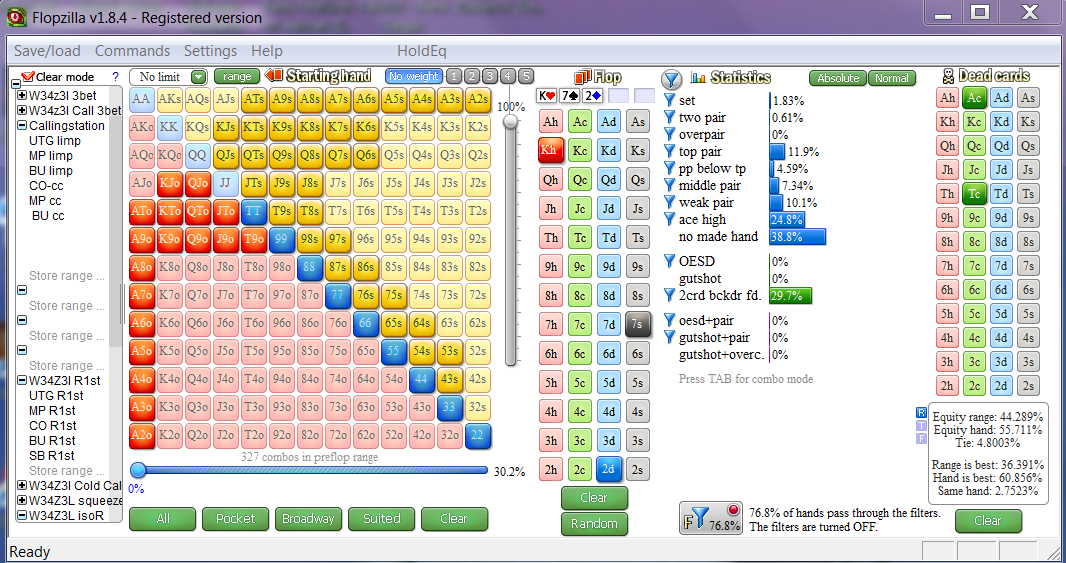4 important aspects of Fold Equity

When learning to play poker, the focus is always on developing a tight-aggressive style in students. We enter the game with strong broadway hands and high pocket pairs. In most situations, it's easy for us to decide whether to value bet or fold. As he masters the basic strategy and grows in the limits, the student masters more complex concepts, one of which is bluffing. Some players claim that knowing how to play strong starting hands and how to value bet correctly is, at best, only half of what poker is all about. It's hard to disagree with them.
Moreover, it is with a bluff that the average person, first of all, associates poker. Bluff and poker are often almost identical concepts for an outside observer. Hobby players consider aerobatics to squeeze a good player out of the sweat with full of trash. They do it with varying degrees of success, but it cannot be denied that the ability to win in "mind games" over your opponent is one of the most attractive things in poker for fish.
A player who plans to make money with poker (or at least not lose money) is also required to make a lot of bluffs and raises. Otherwise, he will have a near-zero or low-plus game already at NL5. However, unlike recreational players, regular bluffs should be deliberate and thoughtful. To improve the effectiveness of bluffs, it is necessary to remember the key theses that allow you to improve this element of the poker player's strategy.
What Factors Affect Fold Equity (FE)?
- Opponent type. As good as our flop continuation bet or the second barrel on the turn is, it will fail if we play against a loose-passive phone that can't fold third pair on the flop, or Ax a hand without matches. We shouldn't stick with our horns and bet on 3 streets in pursuit of the illusory hope that we will be lucky enough to squeeze such an opponent out of the bank. Let's imagine a situation where we are sitting on the cutoff and the button entered our opening with A10c. A dry board comes out, where we did not get to at all:

- Against the regular we would have a very simple and profitable continuation bet here. According to pessimistic forecasts, we have about 50% FE (fold equity - the probability that the opponent will fold his hand), with the necessary 33% for a bet of 1/2 pot. The situation is much worse against a loose-passive opponent - 23% FE, which is definitely not enough for a positive action. What conclusion should we draw from this situation? Narrowing the range of bluffs, expanding the range of hands with which we can bet for value. We recommend the advanced poker calculators Flopzilla and Power-Equilab to develop the skill of identifying suitable situations to make a bluff bet.
- Board texture. The effectiveness of the second barrel into an overcard of the turn on 9T7s and T62r boards will vary greatly. On coordinated boards, our bluffing success will be low. In such situations, it is better to prioritize using semi-bluffs rather than relying on bare Fold-Equity. The general rule is: "An overcard on the turn or river increases fold equity, while a low or coordinated card decreases it." In a situation where a low card comes out, the statistical indicator from the poker program - Fold to Cbet Turn - comes to the fore. A vivid example, when your winrate can greatly increase due to the competent use of Holdem Manager 2, Poker Tracker 4 or other auxiliary poker software that collects statistics and displays HUD in real time.
- The number of players. It doesn't need to be considered in detail - the more players participate in the hand, the more likely it is that one of them will hit a good hand and negate the possibility of a successful bluff.
- Our reputation at the table. If we have previously shown our opponents a bluffing hand at shoudan, then the image of a player inclined to bluffing is fixed to us. Sometimes we don't even need to show our bluff at showdown, just a few aggressive actions, like a pair of 3-bets preflop or raises on the flop, will be enough. Because of our perception of our opponents, fold equity naturally decreases. But the payment of our strong hands from distrustful opponents rises.
Conclusion
Ideally, we should consider all 4 fold equity factors when deciding to bluff. In fact, the right conditions and consideration of all the points from our side will rarely add up to a single happy picture of an ideal bluff. Sometimes the board structure will favor bluff betting, but we are faced with a completely non-fold opponent in HA. Here you can recommend paying attention, first of all, to the specifics of the game of a particular opponent. Further build on the board structure and other factors.
Over time, all this multi-stage analysis will take place in a matter of seconds and lead to a natural improvement in our bluffing actions and, as a result, an increase in profits. Advanced information on tailoring player personality, see Ed Miller's book Playing Opponent: Going Beyond Poker ABC. A better understanding of the theoretical underpinnings of your opponent will not only maximize the profits from playing strong hands, but also greatly increase your bluffing skills.





 Log in
Log in  Register
Register 